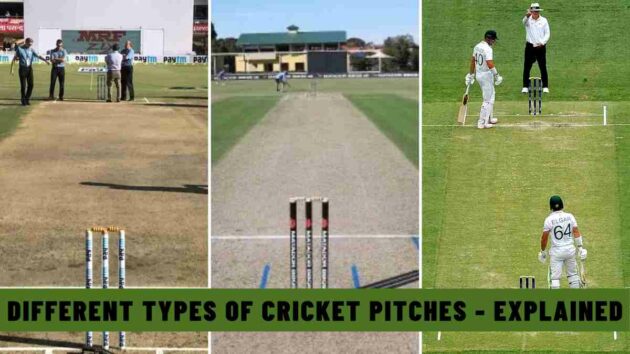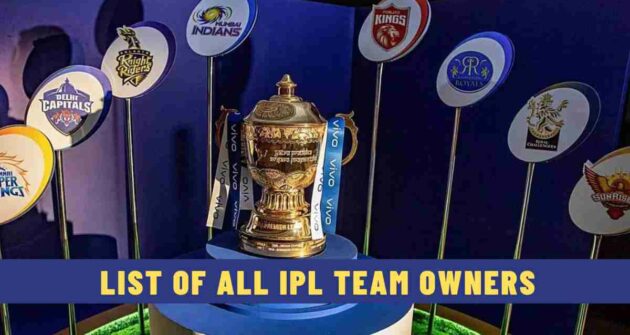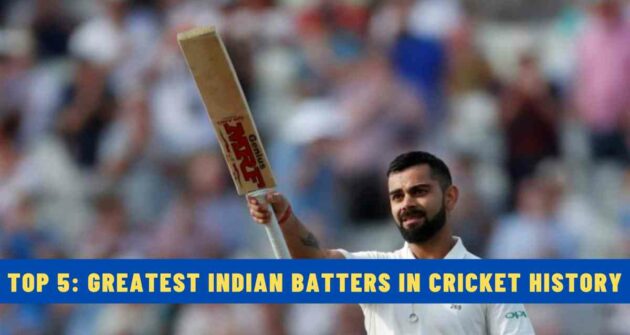Preparing a cricket pitch is a complex issue as it involves mastery, skill, and patience. A pitch plays a critical role in deciding the outcome of a game, and the onus should be on cricket associations, curators, and ground staff to prepare sporting wickets that produce an even contest between the bat and the ball.
Sporting wickets help in maintaining the spirit of the game, where batters and bowlers can highlight their skills, rather than a one-sided wicket that offers help to the batting team or the bowling team. To help the game evolve and grow, sporting wickets should be the need of the hour.
In this post, we discuss the types of pitches that are prepared in cricket.
Table of Contents
#1 Green Pitch
Green pitches possess more grass as they provide more help to the bowlers due to the grass covering that is on top.
Green pitches possess moisture that also aids the bowlers. Moreover, green pitches are normally prepared for test matches as the grass will be able to sustain for 5 days.
Wankhede Stadium in Mumbai and Eden Gardens Stadium in Kolkata possess green pitches, while the Lord’s Stadium and Old Trafford in Manchester possess green pitches. Melbourne Cricket Ground in Australia also possesses a green pitch.
#2 Flat Pitch
Flat pitches possess very little or no grass, thus aiding the batters. These pitches have no cracks, and as the batters are at ease while playing on them, they can score loads of runs. It becomes difficult for the bowlers to bowl on these pitches.
Barabati Stadium in Cuttack, Orissa, and IS Bindra Stadium in Mohali, Punjab, possess flat pitches that have helped the batters score heavily.
Read More | What is a Flat Pitch in Cricket?
#3 Dry Pitch
Dry pitches are helpful for the bowlers as they can trouble the batters. On the other hand, if experienced batters are used to playing on such wickets, then they can score easily. On dry pitches, there is no movement.
If the ball bounces on the cracks, then there could be a hint of movement. Overall, dry pitches are advantageous for both bowlers as well as batters. The Vidarbha Cricket Association stadium in Nagpur possesses dry wickets.
#4 Wet Pitch
Wet pitches possess a high amount of moisture, due to which they are sticky, resulting in less and an uneven bounce, which can trouble the batters. On wet pitches, the ball nips through, and the uneven bounce makes it difficult for the batters and surprises them.
Some batters practice with wet balls to get used to the wet pitch. A wet pitch helps swing bowlers, but there is less help to spinners.
Also Read | Ten Best Swing Bowlers in Cricket
#5 Dusty Pitch
Dusty pitches are useful for bowling as they are soft and possess dust as there is little rolling on them. Bowlers are at an advantage, especially the spinners, while bowling on these unrolled pitches, as it helps them turn the ball with ease.
#6 Dead Pitch
Dead pitches don’t possess grass and moisture, as such pitches are not conducive for test matches as they are used for games with limited overs. Bowlers find it difficult to get wickets as the batters can score heavily on these pitches.
#7 Hybrid Pitch
Hybrid pitches are prepared with a mix of natural grass and synthetic fibres. They possess systematic drainage, can sustain for a longer period, and have plastic fibres stitched into them.
They possess pace and bounce, and they contain a mixture of natural grass. Hybrid pitches are a new innovation in cricket, as they provide balance and maintain the same degree of performance for a long time.
Read Next | How Does ICC Provide Pitch Rating?











